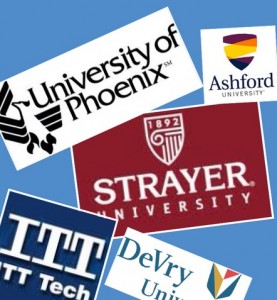Questions To Ask About For-profit Schools
Enrollment in for-profit schools has sky-rocketed in past few years. They say they will get you into a job you love right after graduation. But Bill Gephardt said the claims aren’t necessarily true because a school can’t guarantee employment right after you graduate.
Here are some red flags to look if you are thinking of applying to one of these schools:
- If the school wants to sign you up ‘right now.’ “If the school is good today, it’ll also be good tomorrow,” said Gephardt. “A reputable school will take time to answer any questions and they really won’t be pushy.”
- Do some of your own market research rather than just relying on the school to tell you how much you might earn in your chosen field. “Find someone who works in that career and find out what kind of salary you can expect,” said Gephardt.
- Tuition is a big one. As Gephardt said, “Schools charge tens of thousands of dollars for tuition when a local community college might offer the same types of programs for a fraction of the cost.”
- Some of the schools are not accredited. You can find out whether they are by going online at the US Department of Education. “If the diploma is too easy to obtain, it’s most likely a diploma mail and in these cases they aren’t worth the paper they are printed on,” said Gephardt.
- If the financial adviser tells you to lie on your financial applications to receive more aid, “Well,” said Gephardt, “That’s against the law, and you really don’t want to pay for a school that breaks the law.”
[one_fourth]
During the past two decades, enrollment at for-profit institutions increased 225 percent, according to website NCSL.org. It goes on to say that these institutions enroll about 12 percent of all postsecondary students, about 2.4 million as of 2010-2011 academic year. As more and more community colleges meet and exceed their enrollment capacities, for-profit colleges and universities are becoming an attractive option for students. For-profit institutions often provide flexible scheduling with year-round enrollment, online options, small class sizes and convenient locations. These characteristics are attracting a large and growing population of students entering the education market – particularly working adults, part-time students, and students with children.
This growth has also raised concerns—at both the state and federal levels—about the quality of education these institutions offer, the amount of money in scholarships and loans they receive, the tactics they use to attract students, and the success of their graduates in finding jobs.






